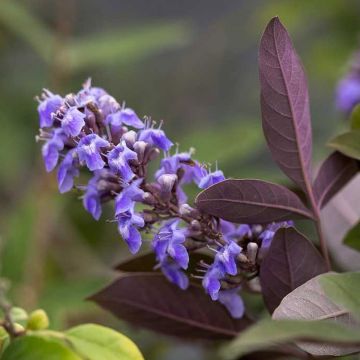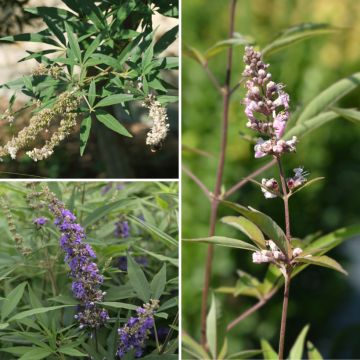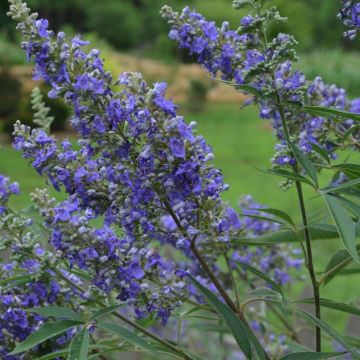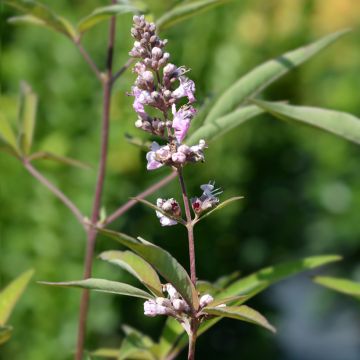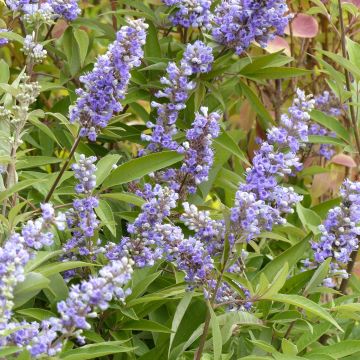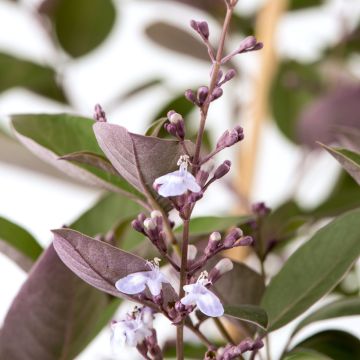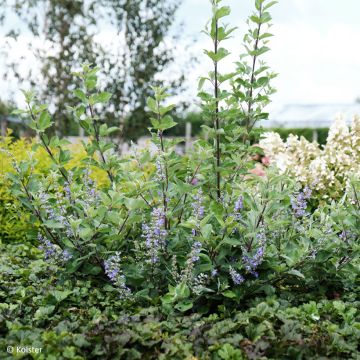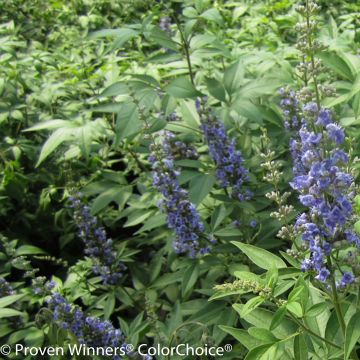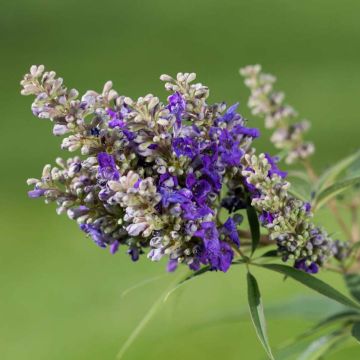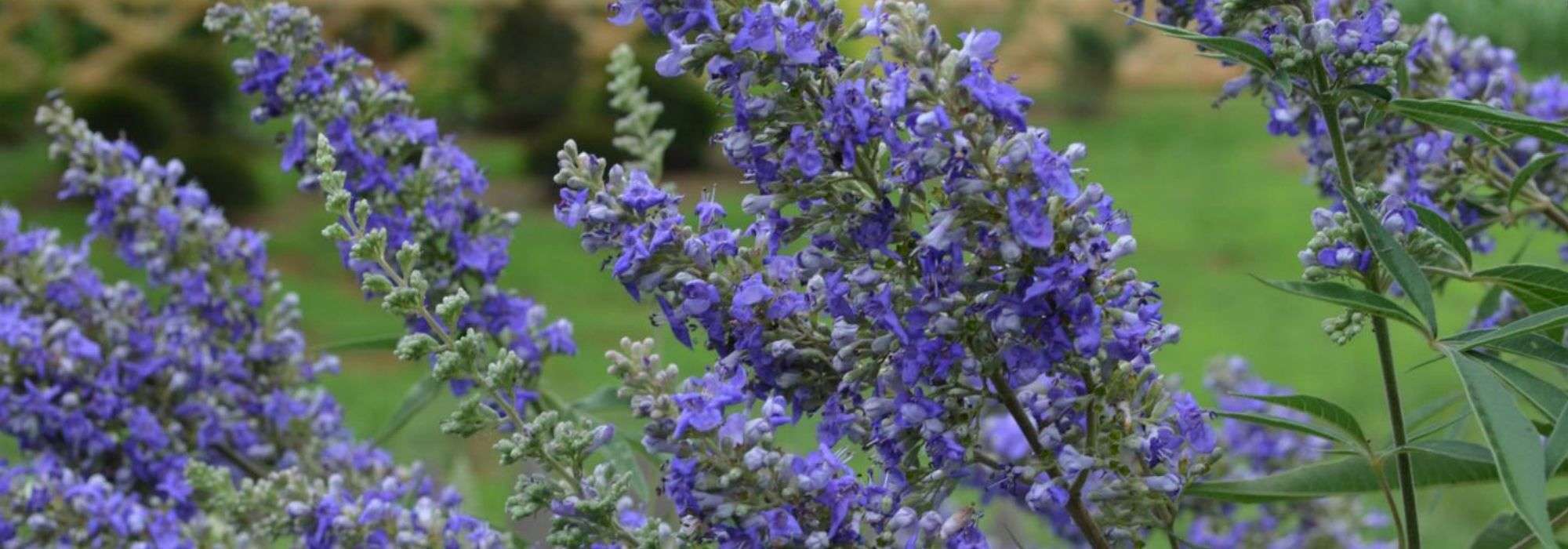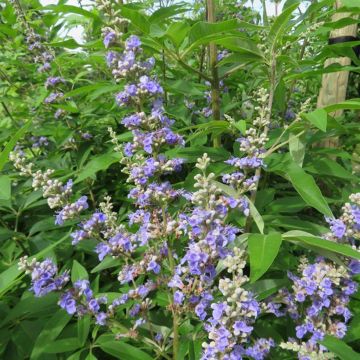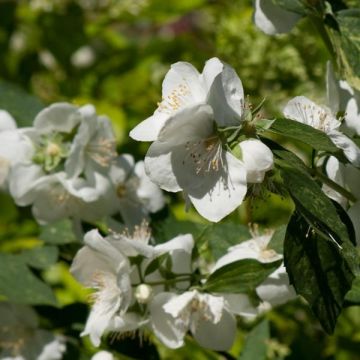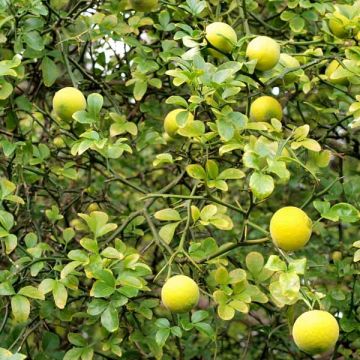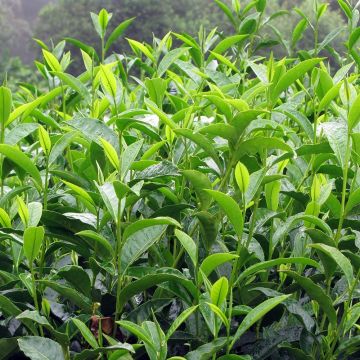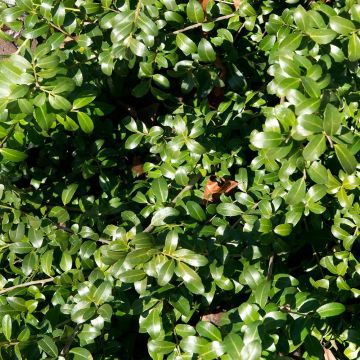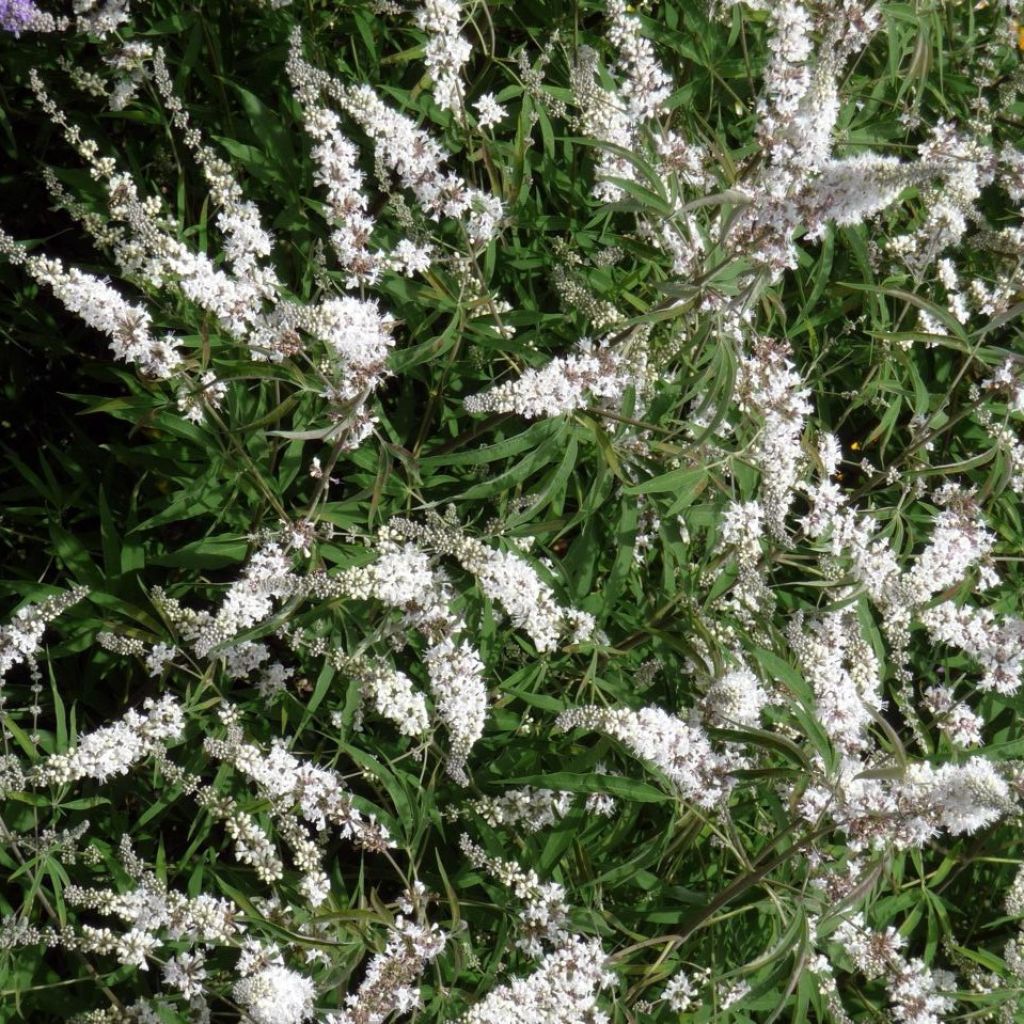

Vitex agnus-castus Silver Spire - Gattilier
Vitex agnus-castus Silver Spire - Chaste Tree
Vitex agnus-castus Silver Spire
Chaste Tree, Monk's Pepper, Chasteberry, Chaste Lamb
Special offer!
Receive a €20 voucher for any order over €90 (excluding delivery costs, credit notes, and plastic-free options)!
1- Add your favorite plants to your cart.
2- Once you have reached €90, confirm your order (you can even choose the delivery date!).
3- As soon as your order is shipped, you will receive an email containing your voucher code, valid for 3 months (90 days).
Your voucher is unique and can only be used once, for any order with a minimum value of €20, excluding delivery costs.
Can be combined with other current offers, non-divisible and non-refundable.
Why not try an alternative variety in stock?
View all →This plant carries a 24 months recovery warranty
More information
We guarantee the quality of our plants for a full growing cycle, and will replace at our expense any plant that fails to recover under normal climatic and planting conditions.
Would this plant suit my garden?
Set up your Plantfit profile →
Description
Vitex agnus-castus 'Silver Spire' is a particularly floriferous and bright variety of Chaste Tree, with beautiful silver-white flower spikes, reminiscent of a buddleia, blooming en masse in late summer. Like the wild species, which is sometimes called Monk's Pepper, Chaste Tree or sometimes Chaste Lamb, this variety also feeds bees and produces red and shiny 'peppercorns' that persist throughout winter. Its beautiful dark green foliage is aromatic when crushed. Vitex is among the most robust and least demanding shrubs: it will find its place in a naturalistic garden or in a free hedge.
Vitex agnus-castus Silver Spire is a beautiful deciduous shrub belonging to the Verbenaceae family. Its wild ancestor is native to the Mediterranean basin and Asia Minor, where it is frequently found along the seaside, planted in sand and directly exposed to salt spray. This Silver Spire variety forms a generally rounded, slightly spreading bush in a few years, all the more dense if regularly pruned. Ultimately, it will measure about 2.5 m (8 ft) in all directions, or even more if not pruned. Its flowering takes place from early August to late September, depending on the climate, on the current year's growth. It takes the form of thin and elongated flower spikes, adorned with tiny nectar-rich white flowers. It then forms small fruits the size of peppercorns, which are aromatic, dark red and shiny and persist until winter. The fast-growing stems are strong and very flexible. They bear palmate leaves, divided into 5 tapering lobes, and their colour is a beautiful bluish dark green. This deciduous foliage turns yellow in autumn before falling. When crushed, it releases a strong pepper scent, hence its nickname of Pepper Tree. Vitex develops a very deep root system, allowing it to draw moisture from deep down when summer is dry.
Often found along the coast, Vitex agnus-castus is very resistant to summer drought once well rooted. Having retained the qualities of this undemanding and sturdy shrub, the 'Silver Spire' variety naturally makes an excellent plant for coastal gardens. Its cold resistance (down to -15 °C (5 °F)) makes it accessible to many gardens, whether natural or without irrigation. It can be integrated into a free hedge or grove, in the company of oleanders (in mild climates), botanical roses, Indian Lilacs, buddleias, or even summer tamarisks, for example.
Its vernacular name, 'Monk's Pepper', dates back to the Middle Ages, when some clergymen consumed the berries of the shrub to resist temptations of the flesh. Since then, studies have proven the plant's properties in relieving problems related to hormonal fluctuations in women. In Ancient Greece, Vitex stems were used to make strong bindings. Legend has it that Ulysses tied his companions with such ties, under the bellies of sheep, allowing them to escape from the Cyclops' cave.
Plant habit
Flowering
Foliage
Botanical data
Vitex
agnus-castus
Silver Spire
Verbenaceae
Chaste Tree, Monk's Pepper, Chasteberry, Chaste Lamb
Cultivar or hybrid
Other Vitex - Chaste tree
View all →Planting and care
Plant Vitex Silver Spire in a sunny position in well-drained, preferably deep soil. This shrub is not very demanding in terms of the nature of the soil, whether it is limestone, neutral or slightly acidic. It withstands sea spray and brackish water very well. Protect it from cold and drying winds and water it in case of prolonged drought during the first few years. It fears very heavy frosts, especially if the soil it is planted in is too clayey and poorly drained.
Planting period
Intended location
Care
Planting & care advice
This item has not been reviewed yet - be the first to leave a review about it.
Similar products
Haven't found what you were looking for?
Hardiness is the lowest winter temperature a plant can endure without suffering serious damage or even dying. However, hardiness is affected by location (a sheltered area, such as a patio), protection (winter cover) and soil type (hardiness is improved by well-drained soil).

Photo Sharing Terms & Conditions
In order to encourage gardeners to interact and share their experiences, Promesse de fleurs offers various media enabling content to be uploaded onto its Site - in particular via the ‘Photo sharing’ module.
The User agrees to refrain from:
- Posting any content that is illegal, prejudicial, insulting, racist, inciteful to hatred, revisionist, contrary to public decency, that infringes on privacy or on the privacy rights of third parties, in particular the publicity rights of persons and goods, intellectual property rights, or the right to privacy.
- Submitting content on behalf of a third party;
- Impersonate the identity of a third party and/or publish any personal information about a third party;
In general, the User undertakes to refrain from any unethical behaviour.
All Content (in particular text, comments, files, images, photos, videos, creative works, etc.), which may be subject to property or intellectual property rights, image or other private rights, shall remain the property of the User, subject to the limited rights granted by the terms of the licence granted by Promesse de fleurs as stated below. Users are at liberty to publish or not to publish such Content on the Site, notably via the ‘Photo Sharing’ facility, and accept that this Content shall be made public and freely accessible, notably on the Internet.
Users further acknowledge, undertake to have ,and guarantee that they hold all necessary rights and permissions to publish such material on the Site, in particular with regard to the legislation in force pertaining to any privacy, property, intellectual property, image, or contractual rights, or rights of any other nature. By publishing such Content on the Site, Users acknowledge accepting full liability as publishers of the Content within the meaning of the law, and grant Promesse de fleurs, free of charge, an inclusive, worldwide licence for the said Content for the entire duration of its publication, including all reproduction, representation, up/downloading, displaying, performing, transmission, and storage rights.
Users also grant permission for their name to be linked to the Content and accept that this link may not always be made available.
By engaging in posting material, Users consent to their Content becoming automatically accessible on the Internet, in particular on other sites and/or blogs and/or web pages of the Promesse de fleurs site, including in particular social pages and the Promesse de fleurs catalogue.
Users may secure the removal of entrusted content free of charge by issuing a simple request via our contact form.
The flowering period indicated on our website applies to countries and regions located in USDA zone 8 (France, the United Kingdom, Ireland, the Netherlands, etc.)
It will vary according to where you live:
- In zones 9 to 10 (Italy, Spain, Greece, etc.), flowering will occur about 2 to 4 weeks earlier.
- In zones 6 to 7 (Germany, Poland, Slovenia, and lower mountainous regions), flowering will be delayed by 2 to 3 weeks.
- In zone 5 (Central Europe, Scandinavia), blooming will be delayed by 3 to 5 weeks.
In temperate climates, pruning of spring-flowering shrubs (forsythia, spireas, etc.) should be done just after flowering.
Pruning of summer-flowering shrubs (Indian Lilac, Perovskia, etc.) can be done in winter or spring.
In cold regions as well as with frost-sensitive plants, avoid pruning too early when severe frosts may still occur.
The planting period indicated on our website applies to countries and regions located in USDA zone 8 (France, United Kingdom, Ireland, Netherlands).
It will vary according to where you live:
- In Mediterranean zones (Marseille, Madrid, Milan, etc.), autumn and winter are the best planting periods.
- In continental zones (Strasbourg, Munich, Vienna, etc.), delay planting by 2 to 3 weeks in spring and bring it forward by 2 to 4 weeks in autumn.
- In mountainous regions (the Alps, Pyrenees, Carpathians, etc.), it is best to plant in late spring (May-June) or late summer (August-September).
The harvesting period indicated on our website applies to countries and regions in USDA zone 8 (France, England, Ireland, the Netherlands).
In colder areas (Scandinavia, Poland, Austria...) fruit and vegetable harvests are likely to be delayed by 3-4 weeks.
In warmer areas (Italy, Spain, Greece, etc.), harvesting will probably take place earlier, depending on weather conditions.
The sowing periods indicated on our website apply to countries and regions within USDA Zone 8 (France, UK, Ireland, Netherlands).
In colder areas (Scandinavia, Poland, Austria...), delay any outdoor sowing by 3-4 weeks, or sow under glass.
In warmer climes (Italy, Spain, Greece, etc.), bring outdoor sowing forward by a few weeks.






























